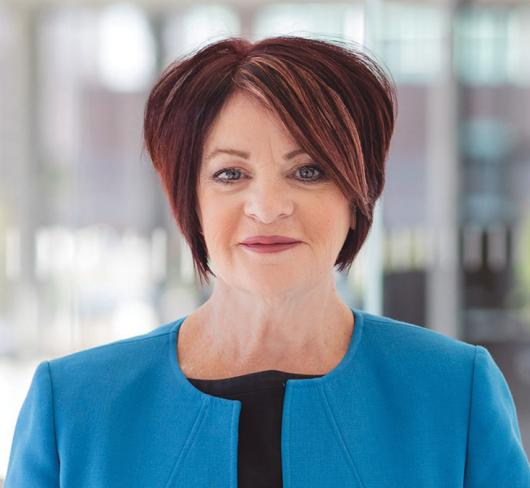
In the Pink: Creating Awareness About Homophobic Bullying (Equity and Women's Services)
I n September 2007, two grade 12 students from Central Kings Rural High School in Cambridge, Nova Scotia, heard about a male grade 9 student who was bullied for wearing a pink shirt on the first day of school. David Shepherd and Travis Price decided to take action. They bought 50 pink t-shirts, and handed them out at school a few days later. Other students at the school wore their own pink clothing creating a “sea of pink” that caught the attention of the local media, eventually gaining attention across North America.
When I read the newspaper article about this event to my class in the fall of 2007, my students quickly identified with the victim as many of them had experienced incidents of bullying. Surprisingly, some were honest enough to also admit they had bullied other classmates, and many acknowledged that they had also participated as bystanders.
During our conversation, one student suggested that they all wear pink t-shirts to show support for what happened in Nova Scotia and to bring awareness about bullying into our school. It was a student-driven initiative and, as educators all know, one of the most effective strategies is to use those teachable moments whenever they blossom in a classroom. Soon everyone was chattering about what clothing they might wear, the boys wondering if they could borrow something from their older sisters, the girls offering to bring in extra t-shirts just in case someone forgot.
A week later, I stood proudly in front of my class as they all sat in their desks, giggling and grinning from ear to ear, all 28 of them wearing something pink: shirts, sometimes with matching skirt or pants, pink hair ribbons, and even some boys with spray-painted hair. I took a photo and we hung it on the door of our classroom, to serve as a reminder throughout the year of their generosity in embracing a new idea about anti-bullying.
BULLYING IS TOO COMMON
An incident of bullying happens every seven minutes in an Ontario schoolyard and every 30 minutes in a classroom1. The most common form of bullying is to attack someone’s sexuality or perceived sexuality by calling them “gay” in a derogatory and hurtful manner. One very common occurrence is students using the word “gay” when they really mean “stupid.” Elementary educators know that LGBT issues affect students in our school communities. Statistics show that one in 10 people is gay, which means that on average 10 percent of the students we teach are gay. Children who do not conform to gender stereotypes are often taunted for being different and sometimes bullied. Name-calling and put-downs are the most common form of homophobia: 97 percent of students have suffered from homophobic name-calling by grade 7 and students are exposed to negative name-calling as early as kindergarten.2
These incidents have long-term consequences: American studies suggest that 28 percent of gay and lesbian students drop out of school before they graduate, most often because of harassment and discrimination in the schoolyard, halls and classrooms.3 After race and ethnicity, sexual orientation is the most frequent motivation for hate crimes in Canada.4 Homophobic bullying can lead to suicide. In 2009, an 11-year-old Massachusetts boy, Carl Joseph Walker-Hoover, hanged himself after enduring bullying at school, including daily taunts of being gay.
In 2009, EGALE reported on its Canada-wide survey of schools which found that three-quarters of LGBTQ students feel unsafe in at least one place at school, such as change rooms, washrooms, and hallways.5 Half of straight students agreed that at least one part of their school was unsafe for LGBTQ students. Three-quarters of all participating students reported hearing expressions such as “that’s so gay” every day in school. Six out of 10 LGBTQ students reported being verbally harassed about their sexual orientation. More than half of LGBTQ students compared to a third of non-LGBTQ students reported hearing remarks like “faggot,” “queer,” “lezbo,” and “dyke” daily. LGBTQ students were more likely than non-LGBTQ individuals to report that staff never intervened when homophobic comments were made. Over half of LGBTQ students did not feel accepted at school, and almost half felt they could not be themselves, compared with one-fifth of straight students.
STUDENTS TAKE ACTION
This year, after I once again read the newspaper article about the Nova Scotia students, my grade 7 class decided to wear pink every Wednesday because, they said, bullying happens more than just one day a year. They also decided to encourage everyone in our school to participate in “Pink Day.” Students designed and produced colourful post- ers and hung them around the school and they made weekly announcements reminding everyone to participate. It is a wonderfully rewarding sight to see many of the 425 students, both male and female, wearing pink every Wednesday at our school; in the staff room teachers compliment each other on their pink apparel and the male teachers have purchased new pink ties to wear every week. Pink Day is beginning to spread in my board. Hillcrest PS, also in Barrie, has begun Pink Days on Wednesdays using resources and posters that I’ve provided. Legislation recently passed in Ontario has placed more responsibility on educators to ensure that schools are a safe learning environment for all students. Bringing awareness to homophobia and the bullying of LGBTQ students helps create a safe learning environment for everyone.
There are many resources now available for educators. ETFO has a wide variety of materials available, including the Positive Space pamphlet, and Equity and Women’s Services offers “Free From Fear” workshops that can be booked through provincial office. EGALE Canada launched a Safe Schools Campaign several years ago and has many resources including the new “My Gay-Straight Alliance” program.6 I highly recommend the CAW brochure “To Our Allies: Everything You Ever Wanted to Know about Lesbian, Gay, Bisexual and Trans Issues.”7 The Canadian Labour Congress has also published a number of resources.8
On April 14 this year, the first International Day of Pink was celebrated in many Canadian schools and promoted in many workplaces. As a result of the activism of David Shepherd and Travis Price, Nova Scotia now officially recognizes the second Thursday of every September as Stand Up Against Bullying Day. Many schools across Canada also commemorate Pink Triangle Day by having staff and students wear pink t-shirts on February 14. As I always tell my own students, one of the best things about Canada is that we celebrate diversity and make all people feel welcome and included in our communities.
Notes
1 Craig, W. & and D Pepler, D. (1998) “Observations of Bullying and Victimization in the School Yard” Canadian Journal ofSchool Psychology, 13 (2), 41-59.
2 Ibid.
3 National Gay and Lesbian Task Force. Anti-Gay/Lesbian Victimization New York 1984; Ramefedi, G. ‘Male Homosexuality: The Adolescent perspective’ Pediatrics 1987.
4 Statistics Canada. The Daily. June , 2004. Available at statcan.gc.ca/daily-quotidien/040601/dq040601a-eng. htm.
5 Available at egale.ca Enewsroom.
6 Available at mygsa.ca.
7 Available at caw.ca/en/3678.htm.
8 Available at canadianlabour.ca/human-rights-equality>pride.

